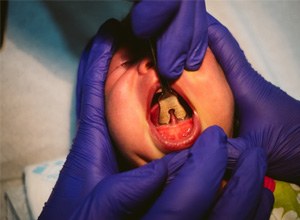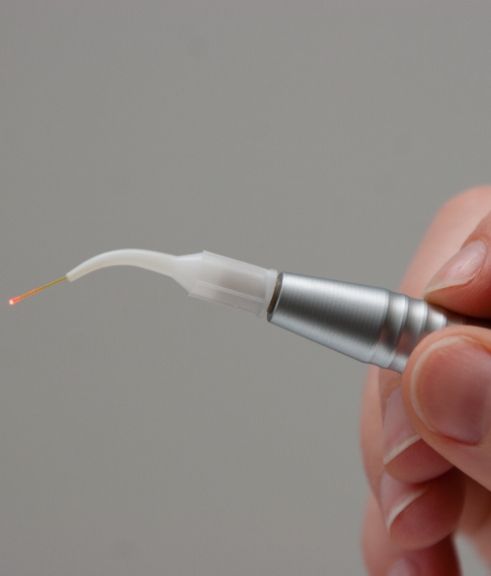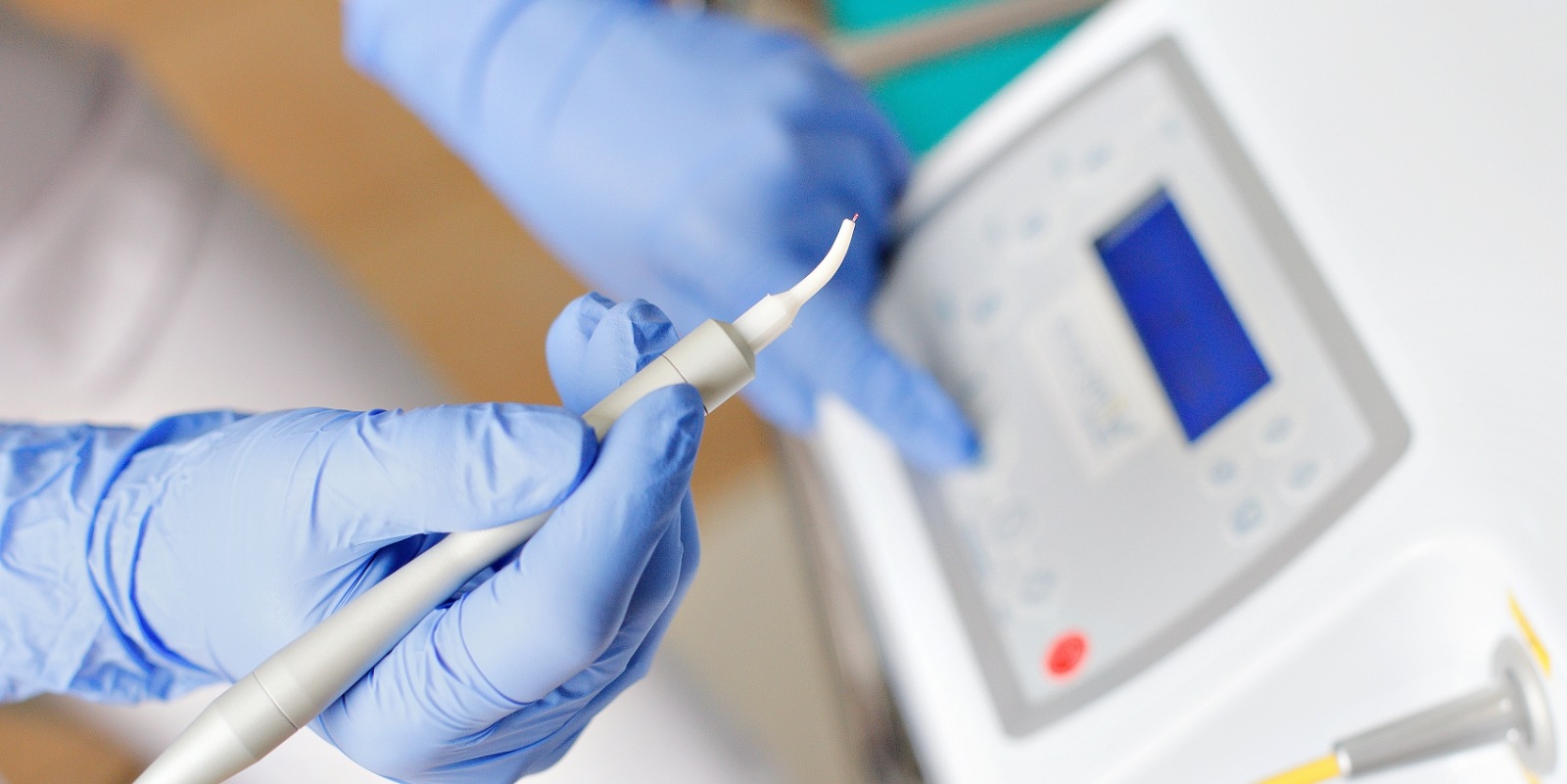Laser Frenectomy – Hamilton, ON
Enjoy the Advantages of Laser Frenectomies
When lip or tongue ties are impacting you or your child’s development, growth, or day-to-day life, a frenectomy may be necessary. Dr. Rullo has several years of experience, and as a specially trained pediatric dentist, he has helped countless infants and children through this procedure. He also uses modern dental technology, like a dental laser, to seamlessly remove excess tissue of frenulum and make the overall experience more positive. Schedule a consultation and learn how a laser frenectomy could benefit you or your child!
Why Choose Hamilton Lip & Tongue-Tie Center for Laser Frenectomies?
-
 Excellent at Soothing Anxious & Fearful Young Patients
Excellent at Soothing Anxious & Fearful Young Patients -
 We Use a Team Approach to Maximize Outcomes
We Use a Team Approach to Maximize Outcomes -
 Ethical Care: Not Every Case Requires a Frenectomy
Ethical Care: Not Every Case Requires a Frenectomy
What Is the Difference Between a Frenotomy and a Frenectomy?

If you’ve been doing some research, you may have come across both the terms, “frenotomy” and “frenectomy”. It’s important to understand that, although sometimes used interchangeably, these are actually two separate procedures used to address both the flexibility and function of the lips or tongue.
A frenectomy is a minor surgical procedure that releases a tongue tie by completely removing the band of overgrown tissue that limits its movement, while a frenotomy only alters the frenulum to allow the tongue more movement. So, although these two treatments may often be referred to interchangeably, they are different!
How Does a Laser Frenectomy Work?

The laser produces a highly focused beam of light that vaporizes the excess tissue and seals the blood vessels all at once. The procedure is quick, painless, and results in minimal bleeding, swelling, and discomfort. The laser itself admits almost no heat, sound, or vibration, reducing the need for any type of local anesthetic. It is extremely gentle and has been shown to shorten recovery time. Here is what you can expect step-by-step.
Preparation

In most cases, minimal preparation is necessary before the procedure. Laser frenectomies are usually painless, so there will be no need to give your child pain medication before the procedure. Just do your best to keep your child calm and comfortable so they aren’t stressed.
Numbing the Area

First, a local anesthetic is administered so your child won’t feel any discomfort. Once the anesthetic has had time to do its job and the area is completely numb, we can move forward with the procedure.
The Procedure

A laser frenectomy usually only takes a couple of minutes. The laser will be used to cut or remove the frenulum. It will release a very thin but intense stream of light energy that vaporizes the soft tissue when it comes into contact with it. Laser frenectomies are associated with no bleeding, a faster healing time, and reduced discomfort during the healing process.
Aftercare Tips

After your child’s procedure, be sure to keep the area clean so it can heal as quickly as possible. This procedure is usually painless, but some soreness is common afterward. This can usually be managed with an over-the-counter pain reliever. It is also recommended that your child remains on a soft food diet during the initial stages of recovery. Babies are often able to feed immediately after their procedure.
Stretching Exercises

After a laser frenectomy, you will need to gently stretch your child’s lips and tongue so that the frenulum doesn’t reattach. We will give you more specific instructions on how to do this during your visit with us. If the soft tissue appears light yellow or white in the area, don’t worry. This is a normal part of the body’s healing process. After a little bit of time, the area will heal and return to its normal color.
Frenectomy Aftercare

Dr. Rullo takes great care to guide his patients through every step of the aftercare process, including inviting parents in to show them exactly how to conduct aftercare exercises! However, there are a couple of important key points to keep in mind following the procedure: the need to keep the oral wound from contracting as it heals and preventing the tissue from reattaching.
Much like the skin comes together as it’s healing when you cut your knee, the frenum will reattach if you aren’t actively keeping it from doing so during the healing process. For this reason, Dr. Rullo believes that post-operative exercises are a key part of a successful frenectomy or frenotomy. These stretches aren’t designed to cause discomfort, but, if necessary, you can help your child through the process by administering an appropriate amount of Tylenol if your child is six months or older.
After you or your child’s procedure, Dr. Rullo will personally walk you through what these exercises will look like, as well as provide you with an informational handout. If at any point you have questions, we invite you to either call us to plan a time for you to come in for a refresher or so we can guide you through the process to help get the best possible results.
The Advantages of Using Lasers for Frenectomies

At our office, we conduct our frenectomies and frenotomies using a diode laser, which emits light across a range of wavelengths. They’re incredibly compact and highly efficient, allowing them to offer precise treatment by minimizing any damage to surrounding tissue. Because of this, patients can enjoy a few key advantages, including improved comfort both during and after the procedure, as well as a speedier recovery. Dental lasers are also able to cauterize the surgical site on-contact. This helps to kill bacteria at the site as well as minimize bleeding that may occur by closing the wound.
What Can You Look Forward to After a Frenectomy?

Although a surgical procedure may seem like drastic intervention, you may be surprised to learn just how positively you and your child’s lives can be impacted:
- Eat Better: Our tongue and lips play a very important role when it comes to allowing us to properly chew and digest food. For this reason, when a child or adult has a more serious lip or tongue tie, food aversions, acid reflux, and digestion issues may be a struggle. With the complete function of these important parts of the body, your baby will be able to breastfeed more easily and may even be able to eat a wider variety of nutritious solid foods!
- Sleep Better: Lip and tongue ties have been associated with breathing disorders like sleep apnea, as the tongue has the ability to obstruct the airway and impeded breathing abilities. Not to mention, sleep is essential for good cognitive and physical health. Removing a tongue tie can help improve you or your child’s quality of rest.
- Speak Better: Similar to the role the lips and tongue play in eating, they also help with speaking. Could you imagine trying to pronounce words with “R” or “S” sounds without moving your tongue or lips? Not only can speech impediments impact your child’s desire to socialize with peers, but they can also have consequences even in older patients, affecting both personal and professional relationships. By gaining full movement of the tongue and lips, speaking can feel more natural and easier.

